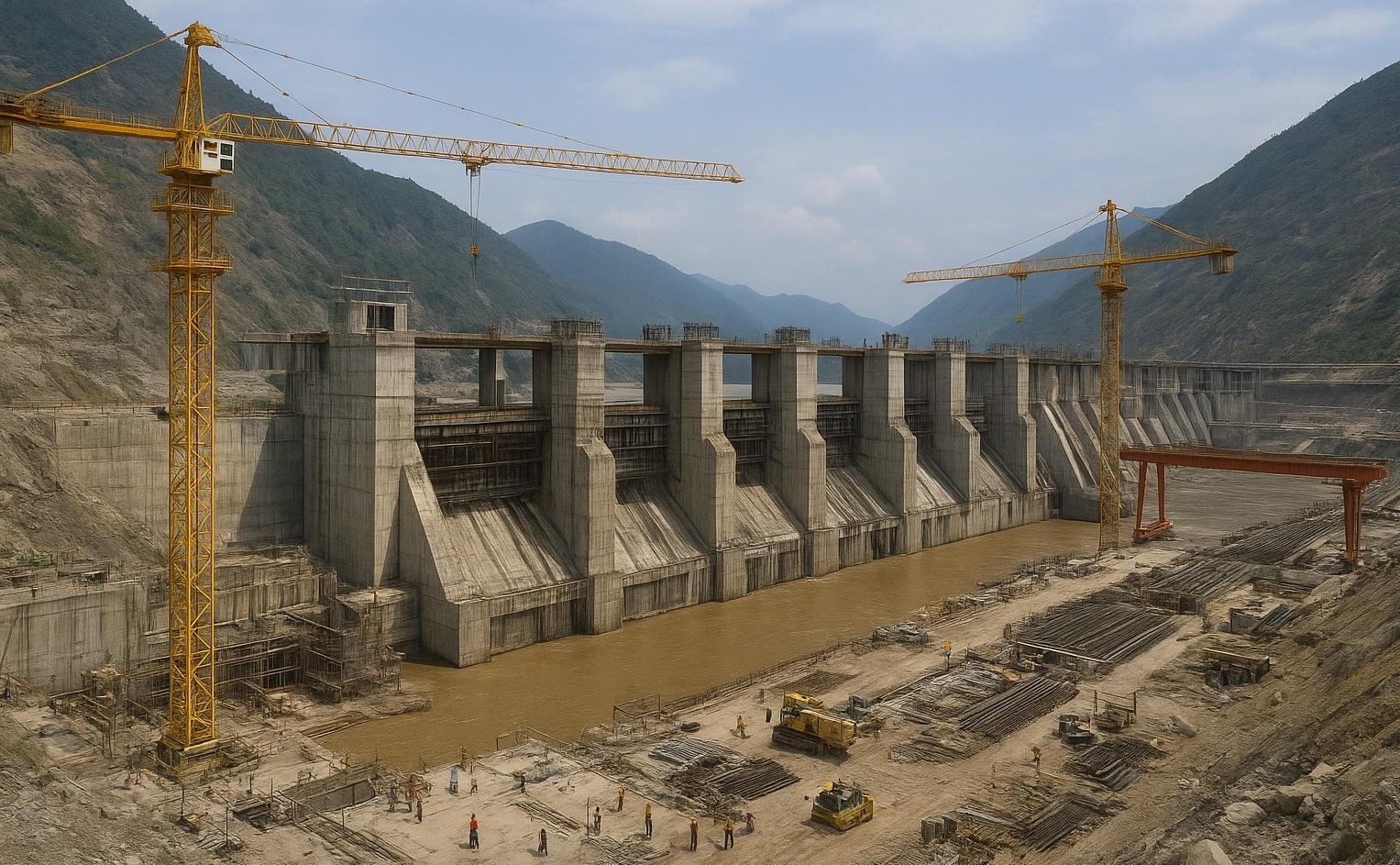China has commenced work on a towering and highly controversial hydropower project along the upper reaches of the Brahmaputra in southeastern Tibet, reigniting persistent anxieties in India and Bangladesh that the initiative could reshape vital water flows and unsettle the fragile equilibrium of regional stability. For New Delhi, the dam raises alarms over the possibility of reduced water availability for millions who depend on the Brahmaputra basin, as well as fears of Beijing leveraging control over upstream flows as a strategic tool. Dhaka, situated further downstream, worries about the compounded risks of altered seasonal water patterns, sediment loss, and adverse effects on agriculture and fisheries that sustain its rural economy. Beyond concerns over water security, environmental specialists warn that introducing large-scale infrastructure into the fragile Himalayan landscape risks further destabilizing ecosystems already strained by climate change, accelerating glacial retreat, and heightened seismic vulnerability. By advancing this ambitious project, Beijing not only signals its resolve to tap the Brahmaputra’s vast hydroelectric capacity but also heightens regional anxieties, deepening geopolitical rivalries and casting a sharper spotlight on the unresolved challenges of managing shared transboundary rivers in South Asia.
On Saturday, Chinese Premier Li Qiang inaugurated a multi-billion-dollar hydropower venture in Nyingchi, a region of critical strategic importance located near the contested border with India’s Arunachal Pradesh, underscoring both the project’s geopolitical weight and its symbolic assertion of presence in the sensitive Himalayan zone. The dam is set to rise along the Yarlung Tsangpo River—known downstream as the Brahmaputra—highlighting both the scale of China’s infrastructural ambitions and the sensitive geopolitical terrain in which it unfolds. This location, nestled in the rugged terrain of the eastern Himalayas, is not only ecologically fragile but also geopolitically charged, given the ongoing border tensions between China and India.
Planned as part of China’s broader vision to transform Tibet into a renewable energy hub, the mega-dam project is tied directly to Beijing’s national climate targets, especially its pledge to achieve carbon neutrality by 2060. As reported by China’s official Xinhua News Agency, the massive infrastructure plan involves the development of five linked hydropower stations and carries a staggering price tag of approximately 1.2 trillion yuan, or about $167 billion—placing it among the most costly and ambitious energy projects China has ever undertaken. Upon completion, it is expected to surpass the capacity of the world-renowned Three Gorges Dam on the Yangtze River—currently the largest hydropower plant globally—positioning the new dam as a potential benchmark for scale and energy output in the global renewable energy sector.
The electricity generated from the facility is slated to power large swaths of China’s inland provinces while addressing energy needs in Tibet itself. Yet, the sheer magnitude of the project, coupled with its high-altitude location in the fragile Himalayan region, has raised significant alarm among downstream nations over potential environmental and hydrological disruptions. Both India and Bangladesh, heavily reliant on the Brahmaputra for agriculture, drinking water, and fishing-based livelihoods, fear that unilateral upstream activity could disrupt the river’s natural flow, especially during monsoon and dry seasons, jeopardizing the water security of millions.
In January, India formally raised its concerns with Beijing, urging it to honor international norms and protect the vital interests of downstream countries that rely extensively on the Brahmaputra River for water security and livelihoods. The Ministry of External Affairs affirmed that “India is keeping a close watch on the situation and will take all measures required to protect its national interests.” Bangladesh has also expressed growing concern over potential declines in water flow and sediment deposits—factors essential to sustaining the fertility and ecological balance of its vulnerable delta region.
China, in response, has consistently sought to downplay these concerns, framing the project as a matter of sovereign development rather than a source of regional tension. In December, the Chinese Foreign Ministry asserted that the dam “would not adversely affect downstream countries,” emphasizing that water flow and ecological stability would remain intact. Officials further reiterated Beijing’s commitment to maintaining open channels of diplomatic communication with its neighbors, portraying the initiative as one aligned with principles of mutual trust and regional cooperation, even as questions about long-term impacts persist among downstream nations.
Yet, beyond diplomatic reassurances, environmental experts remain deeply wary. Conservationists warn that large-scale construction in the seismically active and environmentally delicate Tibetan plateau could trigger landslides, disrupt fragile ecosystems, and lead to irreversible loss of biodiversity. The area, often dubbed the “Third Pole” for its immense reserves of glacial ice—second only to the Arctic and Antarctic—holds critical importance for billions who depend on its rivers. At the same time, it stands among the most delicate ecosystems on Earth. Rising global temperatures are accelerating glacial melt, destabilizing water flows, and heightening the risk of floods and landslides. Against this backdrop, placing a massive dam in such a climate-sensitive region not only amplifies environmental risks but also raises grave concerns about long-term water security and ecological balance across South and Southeast Asia.
Strategically, the project underscores a growing pattern of water being weaponized in regional rivalries. The Brahmaputra’s origin in Chinese-controlled Tibet has long been a source of unease for India and Bangladesh, but the current development marks a significant escalation. The development comes at a time when Sino-Indian tensions are steadily intensifying, particularly along the disputed Himalayan frontier. In the wake of deadly skirmishes in recent years, both nations have significantly bolstered their military infrastructure and troop deployments in the rugged borderlands. What was once a remote, sparsely monitored region has now become a heavily militarized flashpoint, symbolizing the deepening mistrust and strategic rivalry between Asia’s two largest powers.
As construction gathers momentum, the Brahmaputra mega-dam is set to emerge not only as a feat of engineering ambition but also as a pivotal geopolitical flashpoint. The project brings into sharper relief pressing questions about the future of transboundary water governance, particularly in a region where millions depend on the river for their livelihoods. It raises debates over the sustainability of pursuing large-scale infrastructure in one of the world’s most ecologically fragile zones—where climate change, glacial retreat, and seismic volatility already pose formidable risks. At the same time, it underscores how control over shared river systems is increasingly intertwined with the broader contest for influence and strategic dominance across South Asia, potentially reshaping the balance of power in ways that extend far beyond water security alone.

